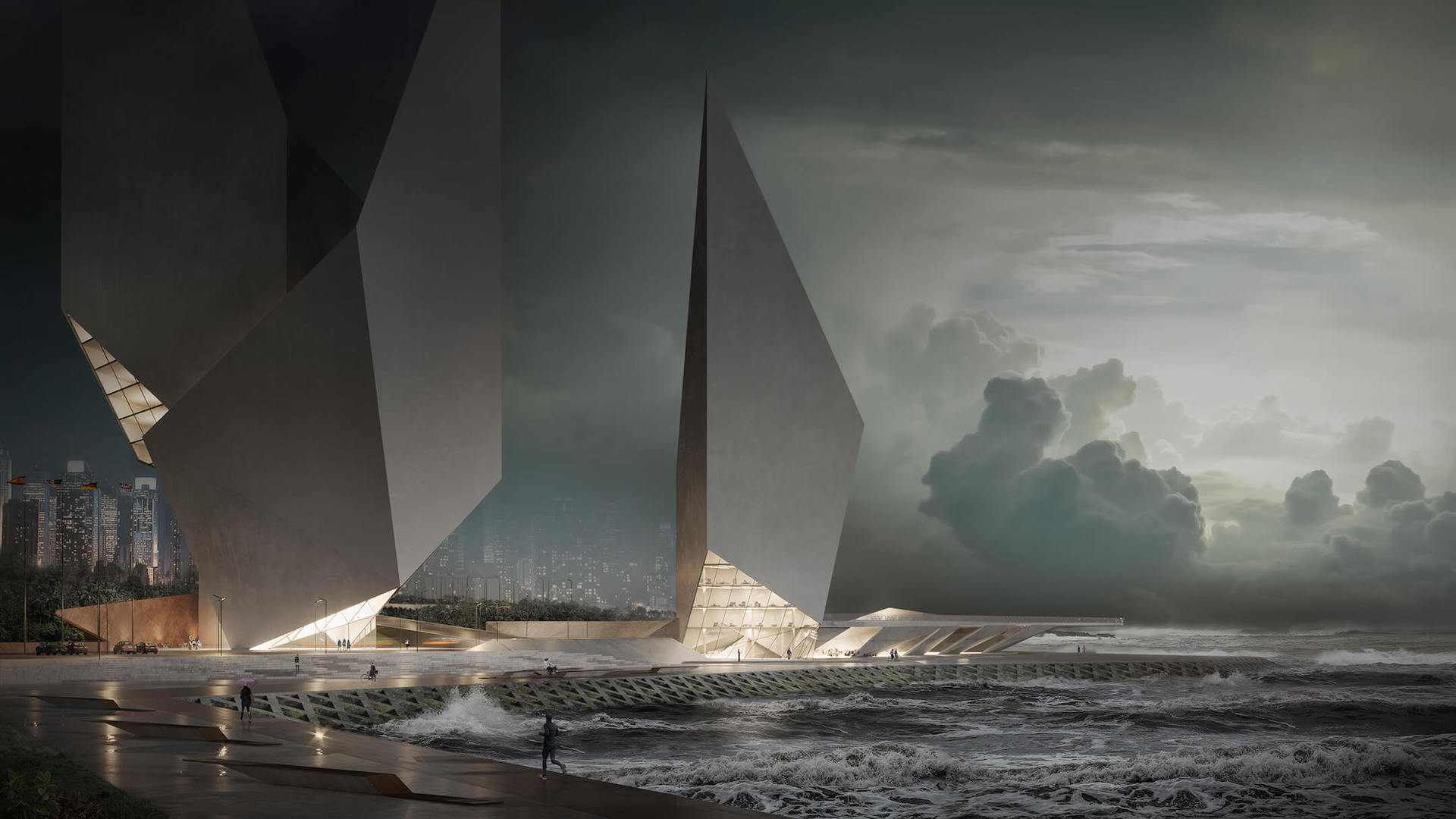Architectural rendering has come a long way since the days of hand-drawn sketches. Today, thanks to advanced software and digital tools, architectural rendering services can produce photorealistic 3D models that provide clients, architects, and developers with detailed visualizations of structures before they’re built. This evolution has transformed not only the way architectural concepts are presented but also how they are understood, revised, and constructed. This guide will explore the fascinating journey of architectural rendering, from its traditional roots to the dynamic 3D models of today.
Early Days: Hand-Drawn Sketches and Paintings
Before the advent of computers, architects relied on hand-drawn sketches, watercolors, and paintings to convey their ideas. These traditional renderings were often intricate, requiring exceptional artistic skill to capture a structure’s details, scale, and ambiance. Architects would use various perspectives and shading techniques to give a sense of depth and realism, making these drawings both technical tools and pieces of art.
The Challenges of Traditional Renderings
While these early renderings were impressive, they had limitations:
- Time-Consuming: Creating detailed hand-drawn renderings was labor-intensive, often taking days or weeks for a single image.
- Lack of Flexibility: Any significant changes required the architect to redo the drawing or start from scratch, adding to time and labor costs.
- Limited Realism: While skilled artists could convey some realism, traditional renderings couldn’t accurately depict lighting, shadows, or the intricacies of materials, making it difficult for clients to visualize the final structure fully.
Despite these challenges, these sketches laid the foundation for modern architectural rendering services, teaching the importance of perspective, detail, and composition in architectural visualization.
The Introduction of 2D Computer-Aided Design (CAD)
The introduction of 2D Computer-Aided Design (CAD) in the 1960s and 1970s marked a revolutionary shift in the field of architectural rendering. CAD allowed architects to create precise technical drawings on a computer, vastly improving efficiency and accuracy. These drawings included detailed measurements and dimensions, which helped streamline the construction process and reduced human error.
Advantages of CAD in Architectural Rendering
CAD provided several advantages over hand-drawn renderings:
- Increased Precision: CAD allowed for exact measurements, making architectural plans more accurate.
- Revisions Made Easy: Unlike traditional sketches, CAD files could be easily modified, allowing architects to make changes without starting over.
- Efficient Drafting: CAD saved time by automating repetitive tasks, such as creating multiple views or adjusting scales.
However, while CAD improved the technical accuracy of architectural plans, it was still primarily a 2D tool, meaning it couldn’t provide the depth and realism that 3D renderings could.
The Rise of 3D Modeling and Rendering
In the 1990s, advancements in computer technology led to the development of 3D modeling software. Programs like AutoCAD 3D and later SketchUp, 3ds Max, and Revit transformed architectural rendering, enabling architects to create digital 3D models of buildings. These models could be rotated, viewed from multiple angles, and even rendered with materials and lighting effects to simulate real-world conditions.
Key Benefits of 3D Architectural Rendering
With 3D modeling, architectural rendering services could offer far more realistic and interactive experiences for clients:
- Enhanced Realism: Textures, lighting, and materials could now be simulated with photorealistic accuracy, making it easier for clients to visualize the finished project.
- Real-Time Changes: Architects could modify models in real-time, instantly showing clients different design options.
- Improved Collaboration: 3D models made it easier for architects, engineers, and contractors to collaborate, as everyone could see a comprehensive visual representation of the project.
The rise of 3D architectural rendering revolutionized the industry, making it a more collaborative and client-centered field.
Photorealistic Renderings: Adding Realism and Detail
In the early 2000s, architectural rendering services began focusing on photorealism, with renderings that looked almost identical to real-life photographs. Using advanced software like V-Ray and Lumion, architects could simulate natural lighting, shadows, reflections, and textures with remarkable accuracy. These photorealistic renderings became invaluable tools for selling projects to clients, investors, and stakeholders.
How Photorealistic Rendering Works
Photorealistic rendering involves techniques such as:
- Ray Tracing: Simulates how light interacts with surfaces, producing realistic shadows, reflections, and refractions.
- Global Illumination: Calculates how light bounces off surfaces, giving renderings a more natural look.
- Material Mapping: Adds textures to surfaces to replicate materials like wood, glass, metal, and stone.
With photorealistic rendering, architectural firms could showcase projects in a way that was almost indistinguishable from reality, making it easier to convey design intent and generate excitement for future projects.
Virtual Reality (VR) and Augmented Reality (AR): Immersive Experiences
More recently, Virtual Reality (VR) and Augmented Reality (AR) technologies have begun to reshape architectural rendering services. VR and AR allow clients to interact with 3D models in immersive, life-sized environments. Using VR headsets, clients can “walk through” a building, experience the layout, and even interact with elements of the design.
Benefits of VR and AR in Architectural Rendering
- Enhanced Client Engagement: Clients can experience the design as if they were physically in the space, giving them a better sense of scale, flow, and aesthetics.
- Informed Decision-Making: By exploring a virtual model, clients can understand how spaces feel and function, leading to more confident design decisions.
- Reduced Miscommunication: VR and AR reduce the chances of miscommunication by providing a clear, immersive view of the design, leaving less to interpretation.
VR and AR have transformed the client experience, allowing them to explore spaces in a way that wasn’t possible with traditional or even photorealistic renderings.
The Role of Artificial Intelligence and Machine Learning
The latest evolution in architectural rendering is the integration of Artificial Intelligence (AI) and Machine Learning (ML). AI can automate repetitive tasks, generate optimized design solutions, and even predict user preferences, making the rendering process faster and more personalized.
Applications of AI in Architectural Rendering
- Automated Design Suggestions: AI can analyze user preferences and recommend design elements that align with their style, helping architects create customized renderings.
- Enhanced Rendering Speed: AI algorithms can speed up the rendering process, producing high-quality images in a fraction of the time.
- Predictive Analytics: By analyzing previous projects, AI can predict potential design flaws and recommend adjustments, improving overall project outcomes.
With AI-driven tools, architectural rendering services can offer even more value to clients, delivering faster, more accurate, and more tailored designs.
The Future of Architectural Rendering
The future of architectural rendering is poised to bring even more innovations, including real-time cloud-based rendering, AI-driven design tools, and further advancements in VR and AR technologies. These tools will continue to improve the accuracy, efficiency, and engagement of architectural projects, making them invaluable assets for architects and designers.
Cloud-Based Rendering
Cloud-based rendering allows for real-time collaboration, enabling team members to work on the same model simultaneously, regardless of their location. This makes large-scale projects more manageable and allows for real-time updates and feedback.
AI-Driven Design Optimization
As AI becomes more sophisticated, it will likely play an even greater role in architectural rendering, offering automated design suggestions and optimized layouts based on client needs and environmental factors.
The Expansion of VR and AR
As VR and AR technologies become more accessible, they will likely become standard tools in architectural rendering, enabling more clients to experience projects immersively from anywhere in the world.
Conclusion
Architectural rendering has evolved from hand-drawn sketches to sophisticated 3D models and immersive VR experiences. Today, architectural rendering services offer clients an unparalleled view of projects, bringing them to life with realistic visuals and interactive tools. As technology continues to advance, the future of architectural rendering holds even greater potential, with cloud-based collaboration, AI-driven customization, and immersive VR and AR experiences set to reshape the industry. For architects, designers, and clients alike, the evolution of architectural rendering promises a more efficient, engaging, and inspiring design process.










